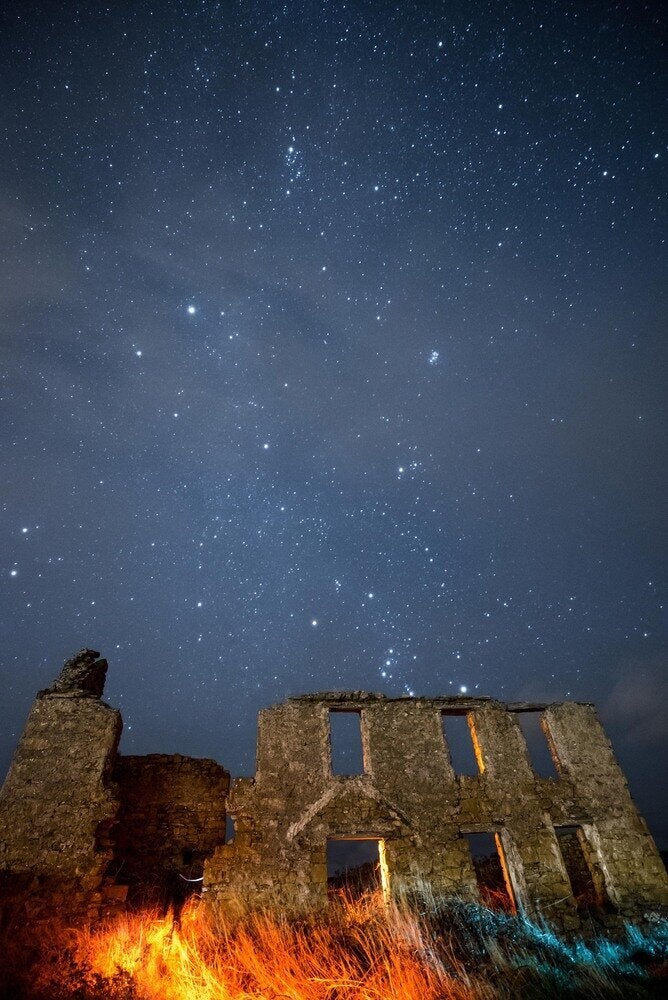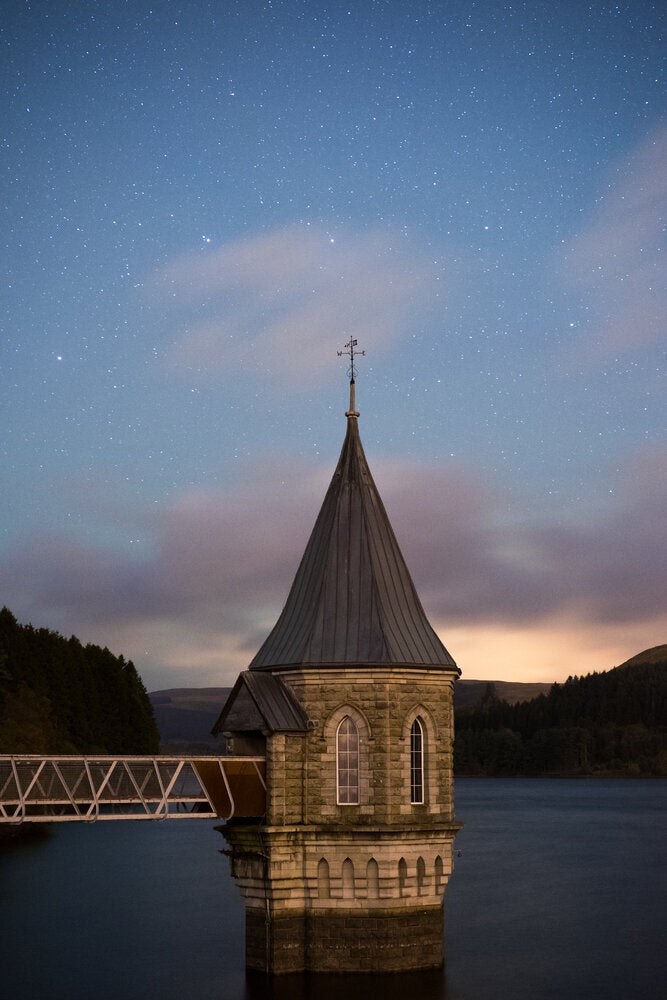Astrophotography can be very daunting when you’re a beginner, especially if you’re not sure where to start.
Do I need a telescope? Which one should I get? Which camera do I need? These are all good questions you should be asking yourself.
You need to feel comfortable using your camera and its functions, so one particular brand will not suit all. Take some time trying different models if you can, because obviously not all will achieve the same result. Making a list of what you want to achieve from your images will give you a good idea of what features you will need, this will help you narrow down the camera brand.
You can however, achieve stunning starscape shots like these below without using a telescope.
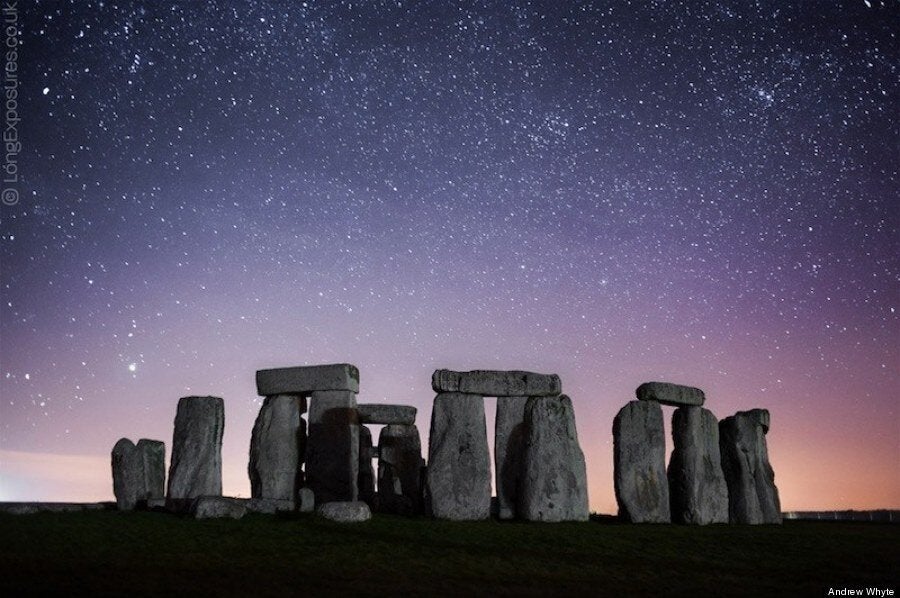

Professional photographer Andrew Whyte has been shooting striking astrophotography shots like these for years. Using long exposure he has also mastered the art of 'merging light' in his shots.
The key to achieving a jaw dropping starry night image is obviously darkness and a camera with a high ISO potential, Andrew gave us a guide in how to shoot in the dark and produce great results.
Wherever you are in the UK there are many dark sky sites which you can check on the Dark Sky Discovery site. If you are in a light polluted area like London try and find an area as dark as possible, perhaps a park you may have access to or anywhere away from street lights.
We ventured to the Isle of Man which has 26 dark sky sites armed with a Sony A7s, which Andrew says gives him the best quality for his astro images, ‘There's almost nothing on the market that can compare to the performance of the sensor on the A7s, possibly a recent Nikon model but at nearly £5k it's more than twice the price.’ The A7s has a phenomenal ISO range of 50 to 409600 with ultra-low noise.
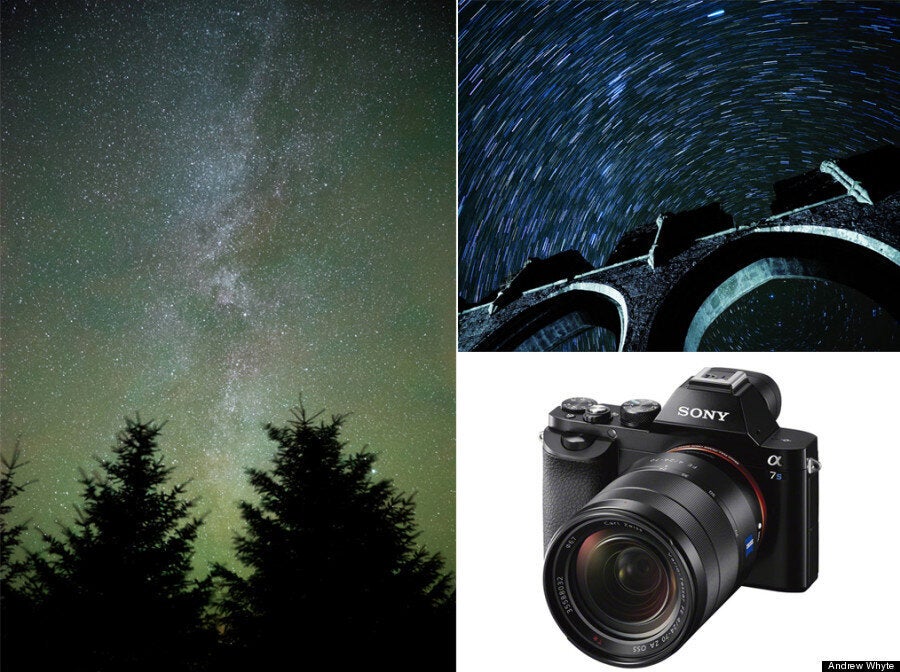
As well as your camera here are a few other things you will definitely need before you start shooting:
A sturdy tripod - a must when doing long exposure shots
A good torch - this will aid you in finding a focussing point
Batteries - in case your torch dies
Some very warm clothes or lots and lots of layers - it will get VERY cold especially in winter
A flask of something hot - is an added plus and will definitely aid your wait between shots and warm you up
As as a beginner there are bound to be some hiccups, not to mention weather playing a big part in how your images end up so be patient and keep trying.
It’s true many of you may not be as lucky to have a professional photographer assisting you like we did, Andrew answers some vital questions on how you can get around problems that may arise as a first timer and some tips to achieve startrails below.
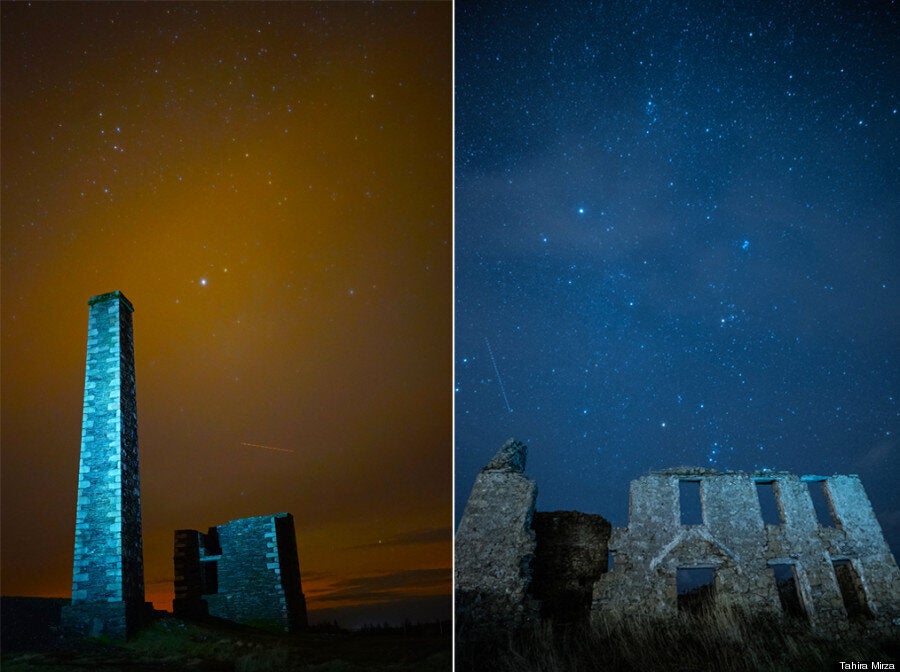
Right: First stop - Foxdale Mine, Isle of Man, Left: Second stop - A derelict house in Langness, Isle of Man
We were lucky to enough to get some good shots considering there was a fair amount of cloud coverage in some parts, so it's worth checking the weather forecast before you make preparations to head out.
USEFUL TIPS:
We had a few hiccups setting up initially if you are a beginner how would you avoid these?
‘As a beginner, there will always be a little time needed to get used to the camera and lens combinations if you’re not familiar with them – it is always helpful for beginners to get used to their camera in the daylight rather than on a pitch dark, wind swept hillside!
Generally, the key problems experienced by beginners at night/astrophotography are how to focus in the dark, nailing a sharp shot, getting the exposure right.
These can be overcome by using a torch to assist with focus, or even setting up while there's still some residual daylight around- it can make such a big difference. Tripod stability and in-camera/ lens-based Image Stabilisation/ Vibration Reduction features are the key factors which contribute to a sharp image. Make sure the tripod is locked solid in every plane of movement, and completely switch off any IS/ VR settings for best results. If possible, use a cable/ remote release or timer to trigger the camera so that it isn't nudged and destabilised at the start of an exposure. Getting the exposure right gets easier with experience but is subject to the look and feel the photographer is trying to achieve, so best done referencing the preview screen on a shot-by-shot basis. However, thanks to the sensor's strengths the live view system on the Sony A7s does give a great idea of how the finished shot will look, before it's taken. Neither the Canon or Nikon live view systems I've used have been this powerful.’
If you live in the city where there is light pollution what tips can you give in order to get the best results?
'Light pollution is going to be your number one challenge but air quality is also a factor. To overcome both, head for some of London's parks as these tend to be quieter, darker spaces: Regents Park has a regular astronomy meet whilst Greenwich, Clapham Common and Primrose Hill all offer wide sky views on clear nightsThe aesthetic consideration here is what you're going to feature in the foreground, so these locations are arguably better suited to deeper space through a scope than widefield. Widespread power outages excepted, you're unlikely to ever get a view of the Milky Way in even the darkest London location but it is possible to shoot startrails around the capital.'
What are the benefits of using this camera attached to a telescope?
‘As I understand the technique of using a camera attached to a telescope, there are two distinct benefits to using the A7s as an exceptional low-light performing camera. Firstly, the more general astro benefit that it produces very clean files with low noise and generous dynamic range, even at higher ISO ratings. Dynamic range is used to describe the difference between the brightest and darkest areas of an image; the A7s captures greater than average detail between these two points so the final image is smoother and has more latitude for editing.
Secondly, one of the key things you're trying to do particularly when shooting through a telescope for deeper space astro is to counteract the movement of the stars introduced by the earth's rotation- this is achieved by using as short an exposure as possible (but capturing the same shot many times over, to 'stack' subsequently). As the A7s has exceptional light gathering abilities, it can gather the cleanest files in the shortest timeframe.’
What are the best settings if you are trying to achieve startrails?
‘First thing to say about startrails is that they can be created in a much wider range of locations than the Milky Way. You still want to start with a wide aperture (say, f/2.8) and a mid-range ISO (maybe 400). Try a test shot of 15 seconds at those settings. If it's too dark, increase only the ISO to 800 and repeat with a 15 second test. If the original frame was too light, reduce the ISO to 200 and repeat. Leave the aperture at f/2.8 but continue adjusting ISO (min 200 max 1600) then shutter speed (min 8 seconds max 30 seconds) until you've found the right exposure settings. Lock the shutter open with a cable release so that it's taking a sequence of frames. You can then batch edit and stack these on a computer- StarStaX is a great, free, multi-platform program for creating a single startrail image from a bunch of JPGs.’
See more of Andrew Whyte's work at www.longexposures.co.uk, Twitter and Flickr sites.
For information on the Sony A7s see here.
